As the summer holidays are approaching for most of you, whether you are in July or August, you should not forget your jewel or pebble culture. I don’t know if it will be a hot summer, but one thing is for sure, whether it rains or heats up, it will be possible to take refuge in the museums to combine the useful with the pleasant. So, I propose three exhibitions to discover this summer and which will continue with the autumn which will arrive much faster than we think!
1-“Engravedgems” – L’école des Arts Joailliers (Paris)
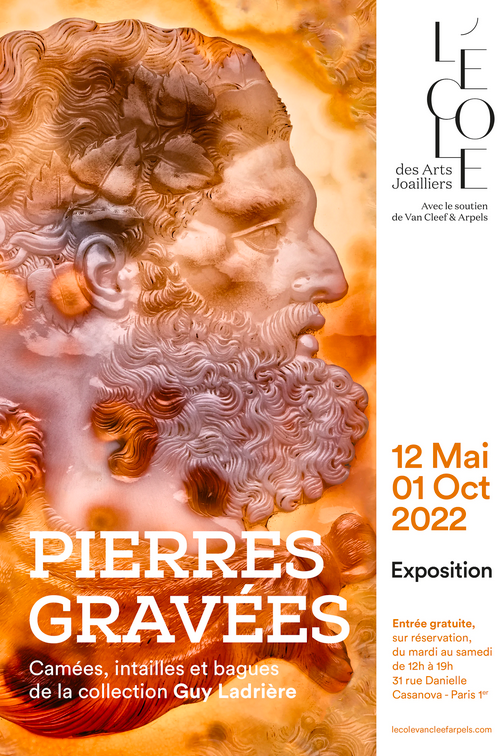
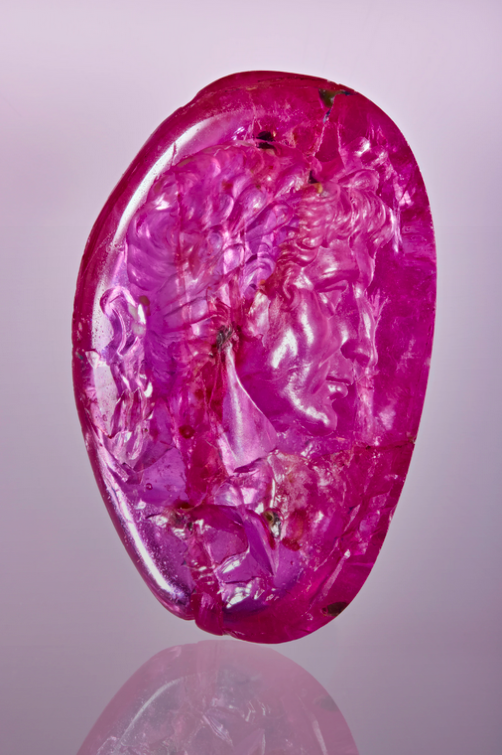
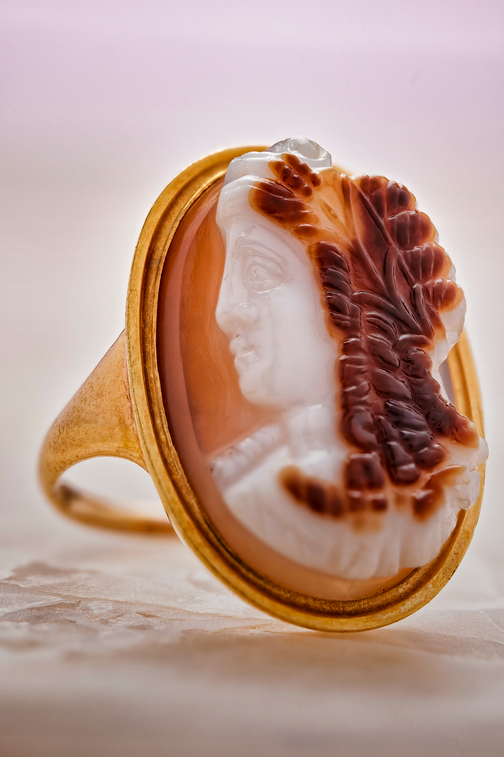
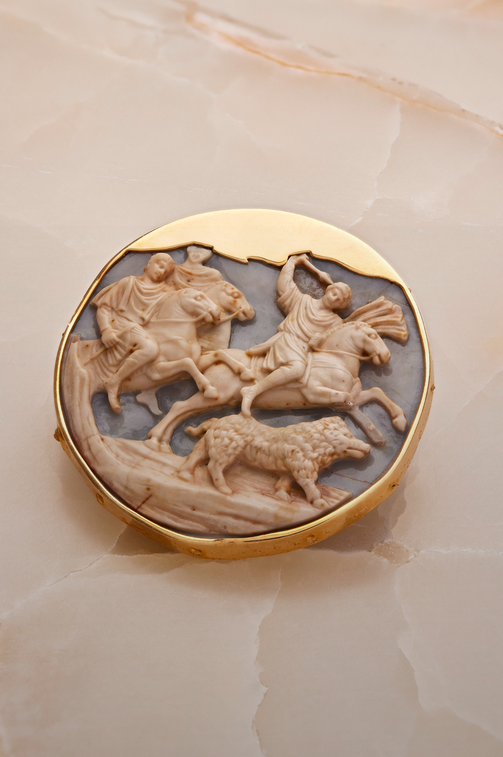
Various cameos and intaglios visible in the exhibition. (1) Attributed to Dioscorides, early 1st century AD. The emperor Augustus. Ruby intaglio. Guy Ladrière Collection. (2) Egypt, 2nd century B.C. Cleopatra I. Sardonyx cameo on a modern gold ring. Guy Ladrière Collection. (3) Italy, late 15th century. Boar hunt, after the antique. Sardonyx cameo mounted on a signet. Collection Guy Ladrière. Photos : l’École des Arts Joailliers
From 12 May to 1 October 2022, the École des Arts Joailliers, with the support of Van Cleef & Arpels, is celebrating the art of glyptics with an exhibition that is free to enter upon reservation. Whether it is in relief – in which case we speak of cameos – or recessed – in which case we speak of intaglio – the art of engraved stones fascinates as much as it questions. Loved or hated, cameos have been an inseparable part of the history of jewellery for thousands of years. The exhibition of the private collection of Guy Ladrière (art dealer specialising in primitive and medieval art) is an opportunity to discover more than 200 pieces, including Greek and neoclassical intaglios, antique and medieval cameos, small sculptures from the imperial period, Merovingian signet rings and episcopal rings that have never before been presented to the general public. On a more personal note, this very nice exhibition has reconciled me with cameos and allowed me to better understand them. This event is complemented by a very beautiful book published jointly by L’École des Arts Joaillier and the publishing house Mare&Martin. Written by Philippe Malgouyres (art historian and head curator of the Louvre Museum’s Department of Works of Art since 1997), this beautiful 304-page book is priced at 49 euros. It is available on the exhibition website, rue Danielle Casanova, and in all good bookshops.
2-“Secrets of the Earth” – Musée des Confluences (Lyon)
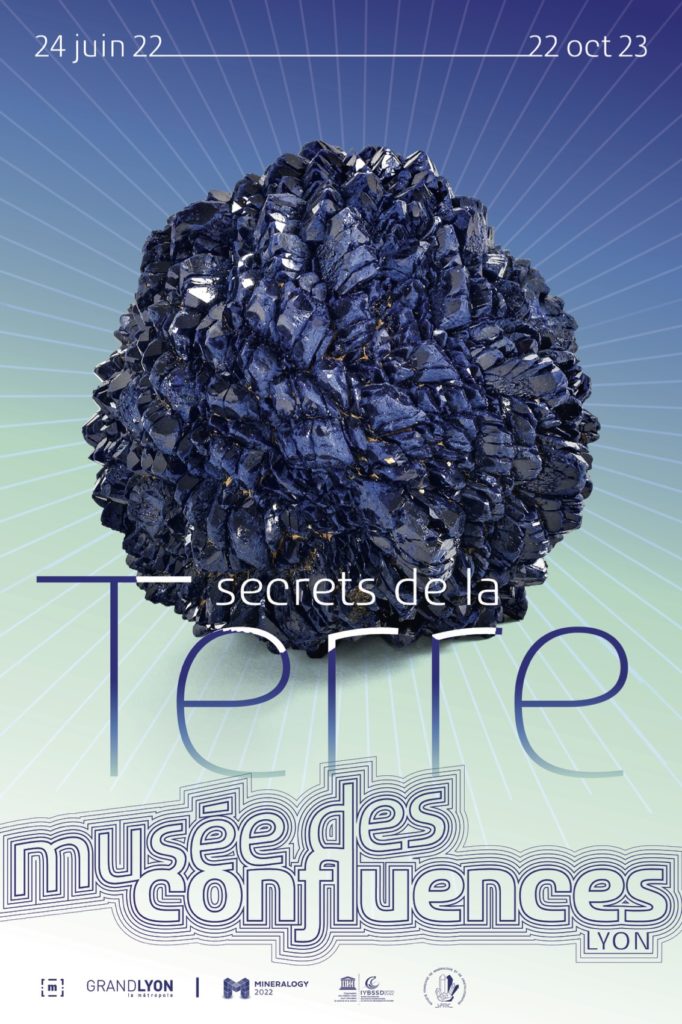


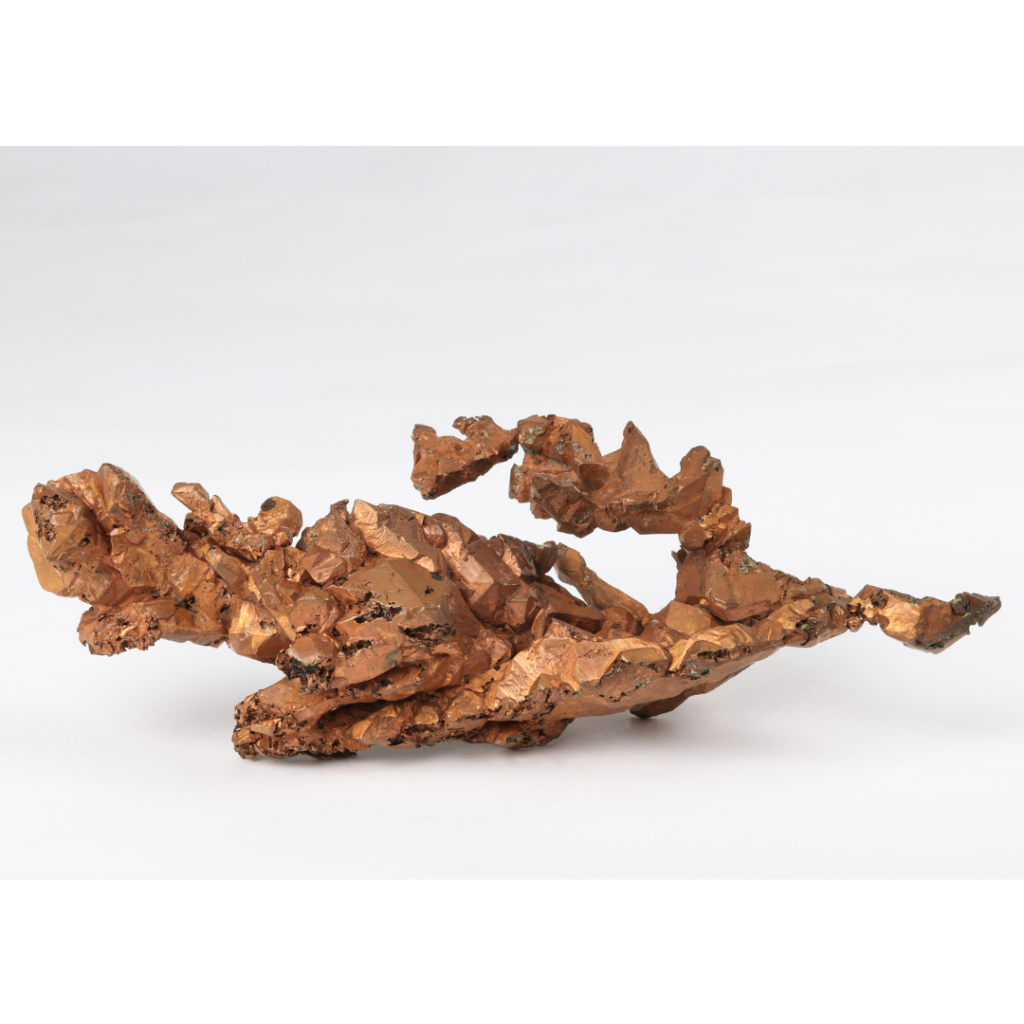


Some specimens presented in the exhibition of the Musée des Confluences in Lyon. (1) Cerusite, secondary lead ore, Namibia, Oshikoto, Tsumeb. (2) Spinel mace, Vietnam, Yên Bái, Luc Yên. (3) Native copper, USA, Michigan (4) Bauxite, Guinea aluminium ore, Niandan – Banier Range (5) Pyrite, Peru. Photos: Musée des Confluences – François Vigouroux
With nearly 10,000 specimens, the mineral collection of the Musée des Confluences is one of the largest public collections of minerals, rocks and gems in France. Built up in the 19th century, it has been enriched significantly by the contributions of various mineralogists, including Alexis Chermette who bequeathed his entire collection in 1996. With the “Secrets of the Earth” exhibition, the Lyon Museum wishes to highlight this very fine collection by explaining the role of minerals in all facets of our daily lives. Whether used to make tools, various objects or our buildings, stones, rocks, gems and metals are absolutely everywhere around us. If it is interesting to question their exploitation, it is necessary to question their rarefaction and the solutions that exist to preserve them and imagine replacement solutions. The exhibition therefore proposes a pathway from the formation of minerals, to their particular properties, then to their exploitation and use in everyday objects. In parallel with this presentation, the museum is working to present two sets that make its collection famous: the azurites of Chessy, which were found only 25 km from Lyon, and above all the 1500 fluorites from the Chermette collection. You have until 22 October 2022 to discover this exhibition and it would be a shame to miss it!
3-“René Just Haüy” – Mineral Collection of Sorbonne University (Paris)
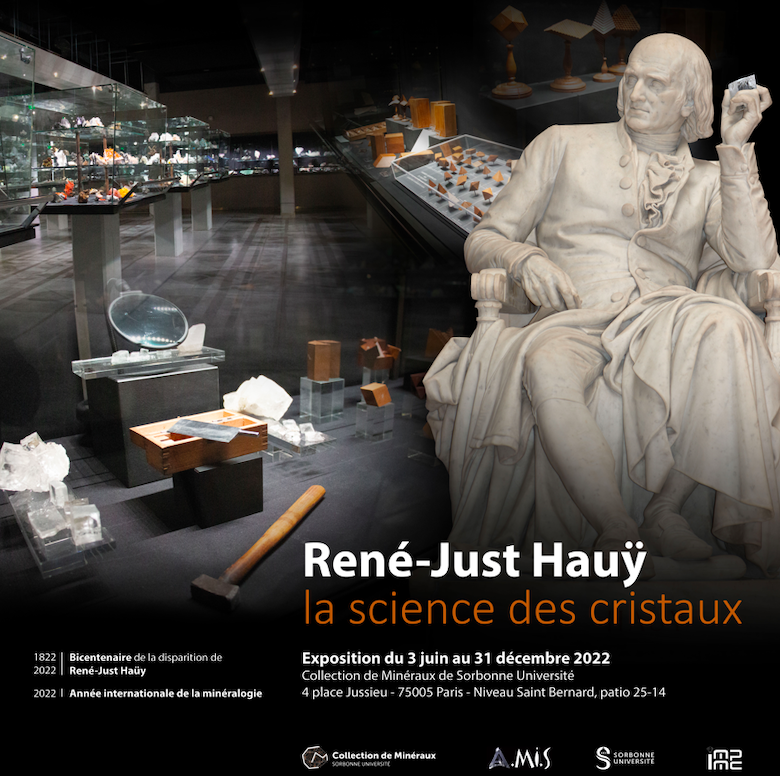
Did you notice that the year 2022 is “the year of mineralogy”? No ? So, in this context, many museums propose events highlighting this theme. In Paris, the Mineral collection of Sorbonne University has just inaugurated an exhibition dedicated to the father of crystallography: Mr René-Just Haüy. It will be on display until 31 December 2022. The exhibition tells you about his life, his education and his discovery of mineralogy at the end of the 18th century when he was nearly 35 years old. Gemologists know him well because, after the cleavage of calcite, he proposed the theory of the “integral molecule” which would allow him to explain the different forms of crystallisation of minerals. And from these forms derive optical properties that allow them to be identified in classical gemmology. The exhibition is rich in objects and graphic documents that allow Haüy to be placed in his time and the scientific contradictions of his time. So to discover or rediscover him, go to Place Jussieu, the exhibition is worth the diversions and the mineral collection too, as it is undeniably one of the most beautiful in Paris, along with those kept at the MNHN and the Ecole des Mines.
See you soon!







